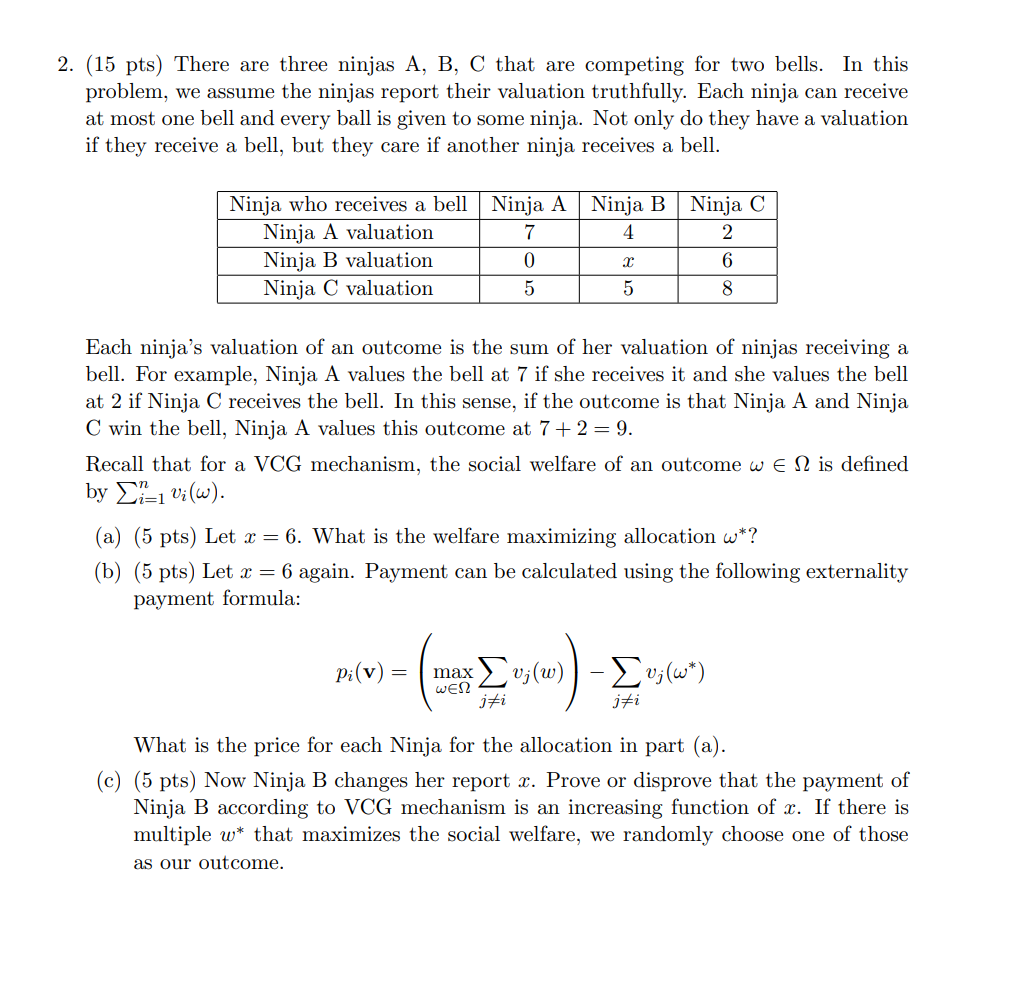Answered step by step
Verified Expert Solution
Question
1 Approved Answer
2. (15 pts) There are three ninjas A, B, C that are competing for two bells. In this problem, we assume the ninjas report

2. (15 pts) There are three ninjas A, B, C that are competing for two bells. In this problem, we assume the ninjas report their valuation truthfully. Each ninja can receive at most one bell and every ball is given to some ninja. Not only do they have a valuation if they receive a bell, but they care if another ninja receives a bell. 7 4 Ninja who receives a bell Ninja A Ninja B Ninja A valuation Ninja B valuation Ninja C valuation 0 5 X 5 Each ninja's valuation of an outcome is the sum of her valuation of ninjas receiving a bell. For example, Ninja A values the bell at 7 if she receives it and she values the bell at 2 if Ninja C receives the bell. In this sense, if the outcome is that Ninja A and Ninja C win the bell, Ninja A values this outcome at 7+ 2 = 9. Ninja C 2 6 8 Recall that for a VCG mechanism, the social welfare of an outcome wen is defined by =1 0;(). Pi (v) = (a) (5 pts) Let x = 6. What is the welfare maximizing allocation w*? (b) (5 pts) Let x = 6 again. Payment can be calculated using the following externality payment formula: max WEN ;() - v;(w*) ji ji What is the price for each Ninja for the allocation in part (a). (c) (5 pts) Now Ninja B changes her report x. Prove or disprove that the payment of Ninja B according to VCG mechanism is an increasing function of x. If there is multiple w* that maximizes the social welfare, we randomly choose one of those as our outcome.
Step by Step Solution
There are 3 Steps involved in it
Step: 1

Get Instant Access to Expert-Tailored Solutions
See step-by-step solutions with expert insights and AI powered tools for academic success
Step: 2

Step: 3

Ace Your Homework with AI
Get the answers you need in no time with our AI-driven, step-by-step assistance
Get Started


